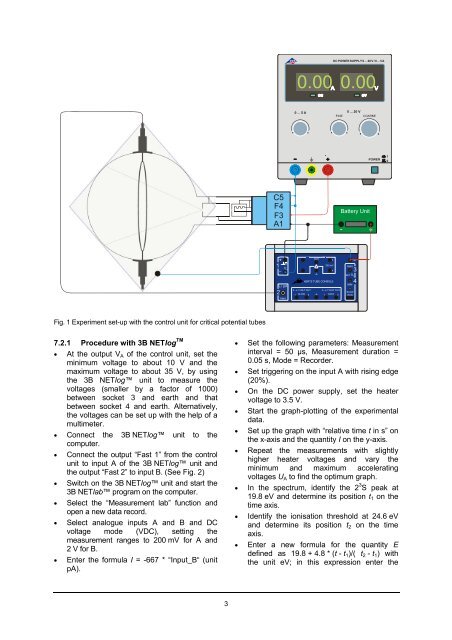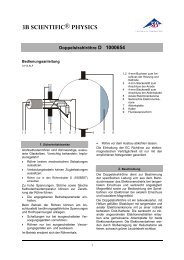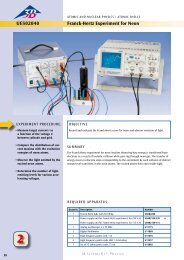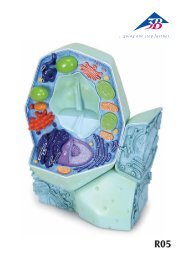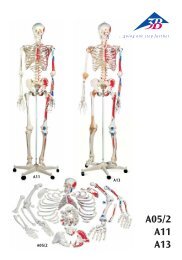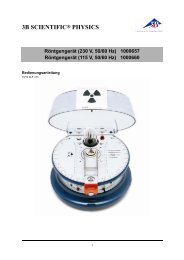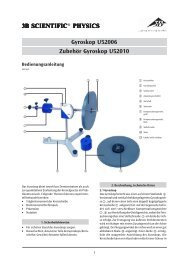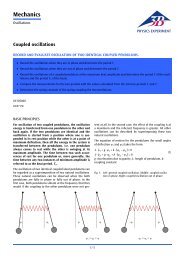3B SCIENTIFIC® PHYSICS - American 3B Scientific
3B SCIENTIFIC® PHYSICS - American 3B Scientific
3B SCIENTIFIC® PHYSICS - American 3B Scientific
Create successful ePaper yourself
Turn your PDF publications into a flip-book with our unique Google optimized e-Paper software.
C5F4F3A1Battery Unit- ++160V AOUT3200 mV!4HERTZ TUBE CONSOLEMAXSET V AMIN340...±1 VOLT OUT 0...±1 VOLT OUTSLOW21 SLOW 2 1 FAST 2 RUNRINGFig. 1 Experiment set-up with the control unit for critical potential tubes7.2.1 Procedure with <strong>3B</strong> NETlog TM• At the output V A of the control unit, set theminimum voltage to about 10 V and themaximum voltage to about 35 V, by usingthe <strong>3B</strong> NETlog unit to measure thevoltages (smaller by a factor of 1000)between socket 3 and earth and thatbetween socket 4 and earth. Alternatively,the voltages can be set up with the help of amultimeter.• Connect the <strong>3B</strong> NETlog unit to thecomputer.• Connect the output “Fast 1” from the controlunit to input A of the <strong>3B</strong> NETlog unit andthe output “Fast 2” to input B. (See Fig. 2)• Switch on the <strong>3B</strong> NETlog unit and start the<strong>3B</strong> NETlab program on the computer.• Select the “Measurement lab” function andopen a new data record.• Select analogue inputs A and B and DCvoltage mode (VDC), setting themeasurement ranges to 200 mV for A and2 V for B.• Enter the formula I = -667 * “Input_B“ (unitpA).• Set the following parameters: Measurementinterval = 50 µs, Measurement duration =0.05 s, Mode = Recorder.• Set triggering on the input A with rising edge(20%).• On the DC power supply, set the heatervoltage to 3.5 V.• Start the graph-plotting of the experimentaldata.• Set up the graph with “relative time t in s” onthe x-axis and the quantity I on the y-axis.• Repeat the measurements with slightlyhigher heater voltages and vary theminimum and maximum acceleratingvoltages U A to find the optimum graph.• In the spectrum, identify the 2 3 S peak at19.8 eV and determine its position t 1 on thetime axis.• Identify the ionisation threshold at 24.6 eVand determine its position t 2 on the timeaxis.• Enter a new formula for the quantity Edefined as 19.8 + 4.8 * (t - t 1 )/( t 2 - t 1 ) withthe unit eV; in this expression enter the3


